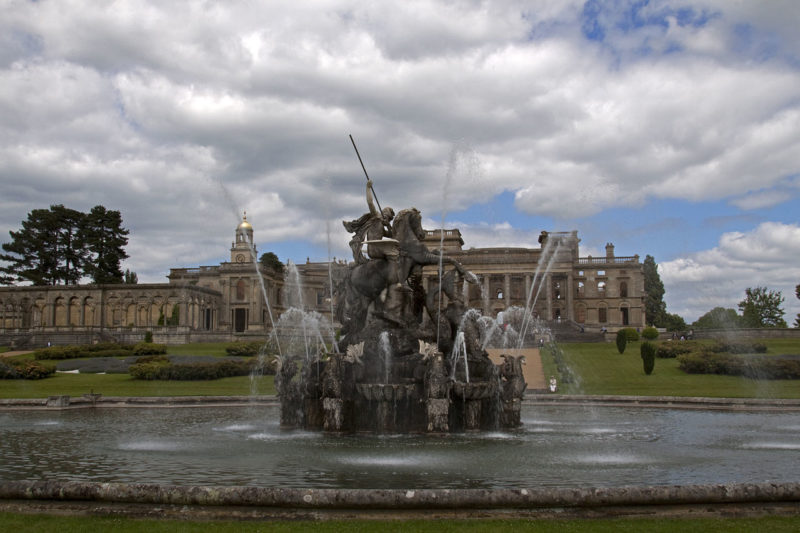Witley Court is one of England’s most beautiful abandoned homes. The home, which was constructed for the Foley family, was once the most stunning country house in Worcestershire and frequently played host to lavish gatherings.

The original building was built in the 17th century to replace an earlier manor house, and it was later expanded by architect John Nash in the 19th century. Sadly, a terrible fire that occurred in 1937 completely destroyed the mansion. Then it was abandoned after being emptied of everything that might be used as scrap. Later, English Heritage renovated the gardens, and Historic England now protects the Grade I-listed ruins.

The Russell family owned the prior manor home, which they sold to an ironmaster, Thomas Foley, 1st Baron Foley, following the English Civil War (1642–1651). Following his death, his son Thomas Foley, 2nd Baron Foley, expanded the courtyard by adding wings and building two towers on the north side of the manor.
Additionally, he built a chapel in the baroque style, decorating it with frescoes by Antonio Bellucci. The ten windows that Joshua Price himself painted, drawing inspiration from Francesco Slater’s artwork, were the most astounding. In 1805, Thomas Foley, 3rd Baron Foley hired John Nash as the house’s architect to carry out a significant reconstruction and addition. The porticoes were the period’s most priceless contribution.

When the 4th Baron Foley encountered financial difficulties 20 years later, he sold the estate to William Ward, the 11th Baron Ward. The mansion was home to Queen Adelaide, the widow of King William IV, for three years (1843–1846). Samuel Daukes, a renowned architect, was employed by William to restore the home in the Italianate style, and he altered the facade by laying ashlar stones over the brick.

The Prince of Wales, who was close friends with Ward, attended numerous parties at the estate and was one of the most popular guests. When William Andrews Nesfield was hired to redesign the gardens in opulent Victorian style, an intriguing project got underway. The gardens are enchanted by the abundance of colorful flowers, elaborate terraces, fountains, and pavilions.

Nesfield considered his gardens to be his “monster labor” and was quite proud of them. The East Parterre Garden is the one that receives the most visitors these days, but there are also stores with a wide variety of sweets, kid-friendly toys, and souvenirs. The elaborate Perseus and Andromeda Fountain, which serves as the garden’s focal point, has survived both the fire and the neglectful time.

The gardens also include some other lovely fountains, but this one is by far the biggest. The discovery of the original blueprints made it possible to start the undertaking that would return the gardens to their previously imagined beauty. English Heritage maintains the work, which keeps them in their former Victorian glory.
The Witley Court forest walks are another unique excursion. Many different species of trees can be spotted on these trails. Witley Court Church, built in the Italianate Baroque style, is next to the mansion. Additionally, it has shops and a visitor-friendly tea cafe. The house’s eastern and central wings suffered significant damage following the fire in 1937. The Orangery, the Orangery, and the surrounding gardens were spared.

In 1938, the estate was put up for auction since there wasn’t enough money for renovation. Only the large items were left there to deteriorate after taking anything that could be moved out of the house. Michael Ibbotson completely rebuilt the area around the house in 2002, adding additional trees, walkways, and other natural elements to make it feel more untamed and natural. The interior of the church is still regarded as one of England’s finest for the time.
Source : Wikipedia | Please dm for removals
Read more from us : Glen Cove’s Historic Woolworth Mansion: Winfield Hall

